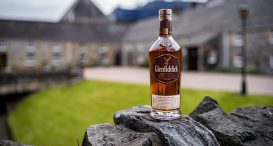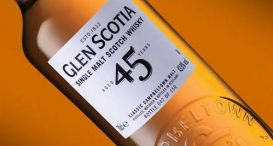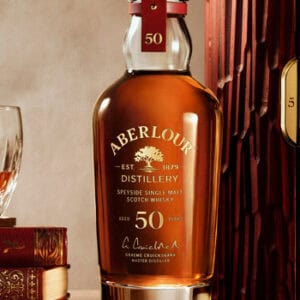Investing in Whisky in 2017
let’s begin
Twenty nine year old Simo is the Executive Director of Milroy’s of Soho, London’s oldest whisky specialist, and The Vault speakeasy bar, located in the store’s cellar at 3 Greek Street, Soho. GreatDrams caught up with him to find out what his views on investing in whisky are and if he had any tips...
Why invest in Whisky instead of more traditional stocks and shares?
For one thing, I love Whisky. I already know the industry and what I’m looking for in an investment, which makes the whole thing so much easier. For another, whilst the lower end whiskies won’t increase in value that much over time, if you are clever about it and pay attention to the industry, then you can see a big return. I’ve bought bottles for £35 before that now, four years later, are already worth five times that. The worst case scenario is that you’ll sell it for the same price you bought it for.
How do you invest in whisky?
At Milroy’s, I invest in casks that we can then bottle and sell on at a later date.Casks are great because you buy it and it automatically increases in value.As soon as I’ve sold out of them, you can’t get it anymore. Two thirds of the flavour of single cask whisky comes from the cask itself so each one is different. You might be able to find another 28 year old Blair Athol Single Cask, but it won’t taste like mine. That’s the beauty of it and it makes great business sense.
Personally, I tend to invest in individual bottles or cases. There are loads of different ways to go about this: vintage bottles from years I know were very good;really old, rare whiskies that will only get older and rarer; bottles that are going to be discontinued; and first batches from new, as-yet undiscovered distilleries.
Is it worth investing in expensive bottles at auctions like Bonham’s?
I would rarely recommend anyone start off by going to an auction house and just buying a bottle to then sell on, because sometimes that will be the peak of its value. The best thing you can do is research the industry, find out what is being auctioned and how much it has gone for before. Auctions can be a great place to get a bargain, but only if you know what you are doing. It will not lose value but it’s not going to be doing anything to make you money.
What are your recommendations to invest in in 2017?
It’s a great idea to get as involved in the industry as you can. Whisky blogs, Facebook groups, meetups, there are loads of ways to find out the trends. American whisky, fine and rare Bourbon in particular, is definitely the fastest growing region that we stock at Milroy’s. Prices are jumping up, about $5-$10 a year per bottle, so try something like Michters or Buffalo Trace Antique Collection.
It’s also worth taking a deeper look into particular distilleries. Certain names will always do well – Mortlach, Llewelyn, Ardbeg, Macallan – particularly older or rarer bottlings. An example from my own collection is the 1965 Glenmorangie,one of the first wine cask finishes they ever did, which I know will continue to go up in value, or the five cases of Elijah Craig 12 I bought when I found out it was being discontinued. Closed distilleries like Port Ellen, which shut down in the 1980’s, also go through their phases of popularity, but remember the demand may eventually move on to something else.
There are also a lot of new distilleries coming out, or that have launched in the last five or six years. These are a great place to start – people like Arran, Kilkerran, Wolfburn – it might be a longer investment but it is a great idea to get in there early.
What do you look for in an investment?
As I said, certain distilleries do appreciate in value more than others, as do limited edition and single cask runs.
First, I look at the names, then I look at whether we’ve tried it before. Whisky Magazine shows trends of whiskies and distilleries and what they are doing on the back page, and Auction sites always have past auctions of that bottle and what it sold for. It’s all just about doing your research about what has gone before, and the more you know the more chance you have of finding some unicorn of a bottle that you know will do well.
Any Do’s or Don’ts?
Do your research. If you are just starting out,distilleries are the best place to begin. If you know they are about to stop producing something, it could be a great investment for the future. Also look at what distilleries are opening up and if they have good reviews. Wolfburn released their inaugural whisky, one of their first bottlings, which sold for £140. And now, just two years later, its already worth a lot more. If you know they aren’t going to be made again then buy it.
Do spread your bets. Look to buy one every month or every two months and do it for 10 years. Or five years. Or whatever you want to do it for and then just leave it. That’s what we all do. You can invest in whisky and spend under £100 a bottle each time, as long as you go for the long term investment.
Don’t think Whisky is always going to make you money. It might not lose you money but it’s not going to make you money either. Don’t go into it thinking it’s going to be your millions.
Don’t believe what you hear on TV and don’t buy things because you see it in a film. There was a popular morning news programme that one announced that if you bought a bottle of The Whistle Pig today you could buy a house in 10 years’ time, which is simply not true. No whisky does that. The next day we must have got 30 or 40 calls in the shop from people wanting Whistle Pig. It’s a good whisky. It might go up by 30%, which is a good margin in two years, but the bottle only costs £100 in the first place. If you buy it and keep it you could probably double your money in four years’ time, but you’re still only making £20 a year.
What do you think about people who say whisky was made to be drunk, not traded?
I drink. I’m a drinker. My shop invests but, personally, I drink. The last time I bought a bottle of ’75 Ardbeg I drank it, whilst selling it for £170 a glass in The Vault, our secret bar below Milroy’s. I drink it because I like to drink whisky. The only ones I collect are my own Milroy’s ones, for a personal keepsake and the romanticism behind it. Saying that, there is nothing wrong with investing in the future.
What I don’t like is people coming in who are looking to flip it straight away. Bourbon is a great example of this. We sell the Buffalo Trace Antique Collection for £160-£170 a bottle, but as soon as it got released in America they were going for $700 or $800 a bottle. So you can just flip it straight away. But we don’t do that. At Milroy’s we are a drinking culture and these people are killing the industry.
How do you see whisky investment changing in the future?
Like anything, whisky has its up’s and it’s downs, but because of the global market we have nowadays it will never truly crash. You might see a dip in the European market but the Asian market might go up. The Taiwanese import millions and millions of the stuff, and Asia brings in a lot of money.
If you are still not sure then the best thing you can do is come chat to the experts. Just come in, have a drink, as long as you like whisky then we will always have a conversation. People who just come in and don’t actually like whisky but just want to make a quick buck we won’t talk to. We’re going to keep our own secrets in. But if people genuinely like whisky then we will be happy to talk to them.













1 thought on “Investing in Whisky in 2017”